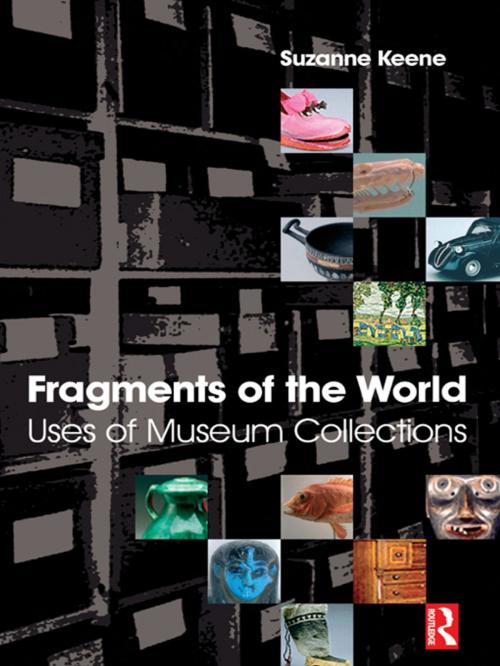Fragments of the World: Uses of Museum Collections
Nonfiction, Home & Garden, Antiques & Collectibles, Care & Restoration, Social & Cultural Studies, Social Science, Archaeology| Author: | Suzanne Keene | ISBN: | 9781136402340 |
| Publisher: | Taylor and Francis | Publication: | August 11, 2006 |
| Imprint: | Routledge | Language: | English |
| Author: | Suzanne Keene |
| ISBN: | 9781136402340 |
| Publisher: | Taylor and Francis |
| Publication: | August 11, 2006 |
| Imprint: | Routledge |
| Language: | English |
During the past decade a number of individual museums have found imaginative ways of using their collections and of making them accessible. However, museum collections as a whole are enormous in size and quantity and the question of how can they can be put to best use is ever present. When conventional exhibitions can only ever utilise a tiny proportion of them, what other uses of the collections are possible? Will their exploitation and use now destroy their value for future generations? Should they simply be kept safely and as economically as possible as a resource for the future?
Fragments of the World examines these questions, first reviewing the history of collecting and of collections, then discussing the ways in which the collections themselves are being used today. Case studies of leading examples from around the world illustrate the discussion. Bringing together the thinking about museum collections with case studies of the ways in which different types of collection are used, the book provides a roadmap for museums to make better use of this wonderful resource.
During the past decade a number of individual museums have found imaginative ways of using their collections and of making them accessible. However, museum collections as a whole are enormous in size and quantity and the question of how can they can be put to best use is ever present. When conventional exhibitions can only ever utilise a tiny proportion of them, what other uses of the collections are possible? Will their exploitation and use now destroy their value for future generations? Should they simply be kept safely and as economically as possible as a resource for the future?
Fragments of the World examines these questions, first reviewing the history of collecting and of collections, then discussing the ways in which the collections themselves are being used today. Case studies of leading examples from around the world illustrate the discussion. Bringing together the thinking about museum collections with case studies of the ways in which different types of collection are used, the book provides a roadmap for museums to make better use of this wonderful resource.















